Two Spotty Chicks
 Tuesday, April 10, 2012 at 12:29PM
Tuesday, April 10, 2012 at 12:29PM 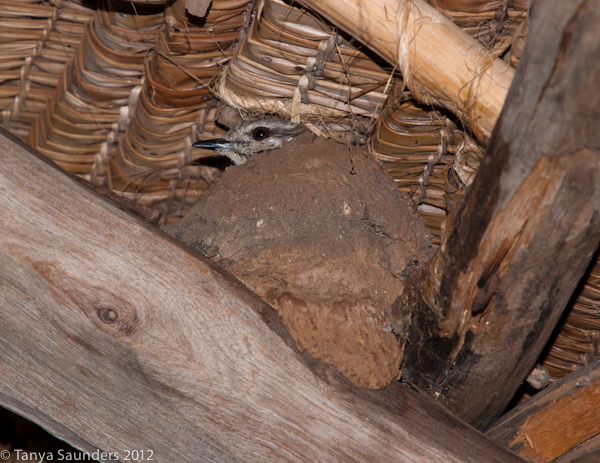
For those of you who follow the Kulafumbi Facebook page, you'll remember that on 18th March, I posted a photo of the Spotted Morning Warbler sitting on its mud-cup nest under the eaves outside our bedroom (above).
On Sunday, I decided to have a quick peek from a safe distance (so as not to disturb the proceedings) and - lo and behold - look what we have here!
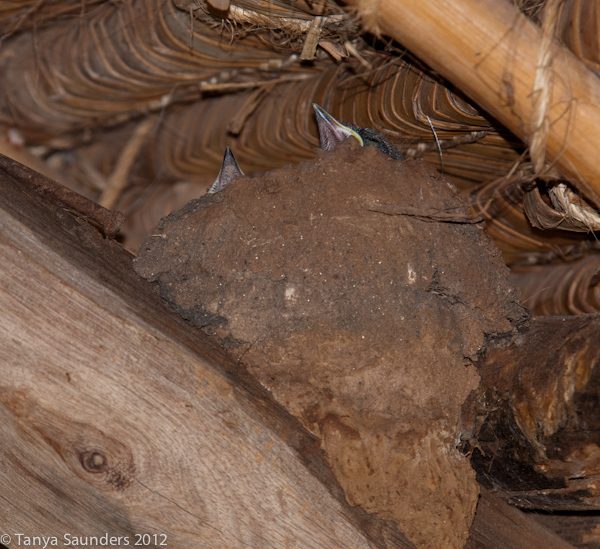
How appropriate, a couple of chicks for Easter! And while it would be possible to take the Easter connotations to ridiculous extremes and say they've even got yellow mouths for the occasion, what is far more likely is that nature has designed the chicks' mouths to be bright yellow to make a clear target for the adults when they're bringing food...
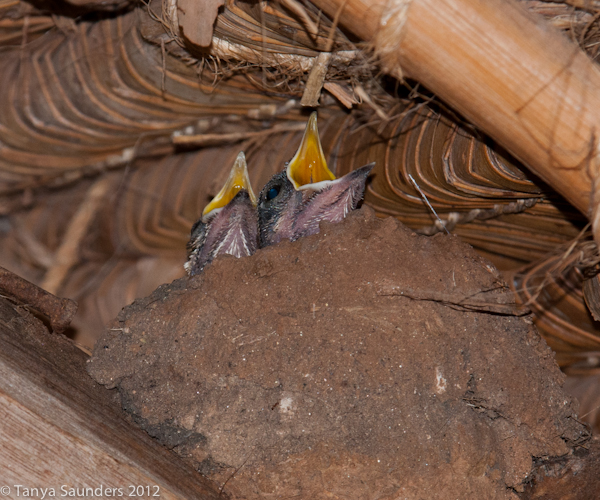
Next time the dentist says 'Open wide', see if you can match this! This little chick obviously wants to give itself the best possible chance of being the successful recipient of the next mouthful of food brought by its parents.
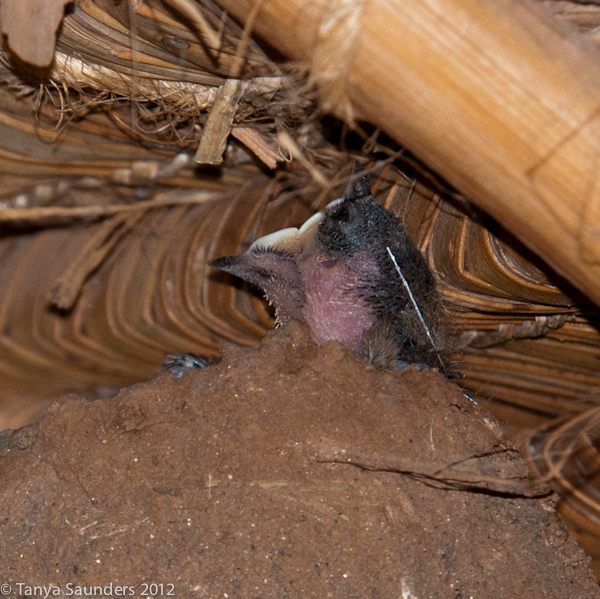
Who's a not-so-pretty boy (or girl) then? (Don't worry, I'm sure your mum thinks you're cute!)
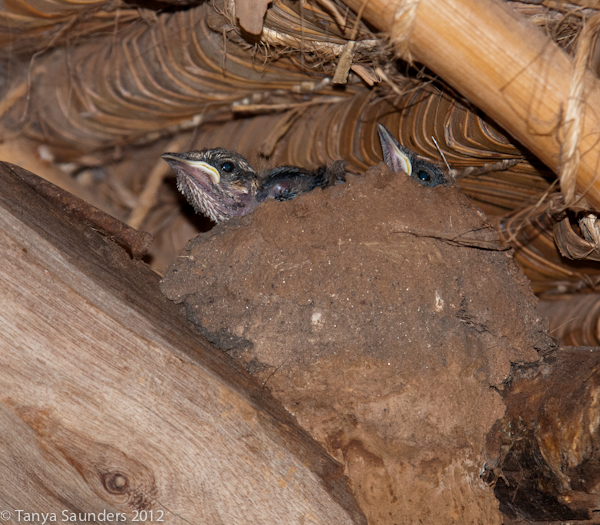
Although it's a little difficult to make out, this photo gives you a better idea of the nest's setting, under the eaves near the centre of the picture. Even harder to see is that one of the adult birds has just landed near the nest, in the triangle formed by the posts in the top left corner of the image. (You'll have to take my word for it.)
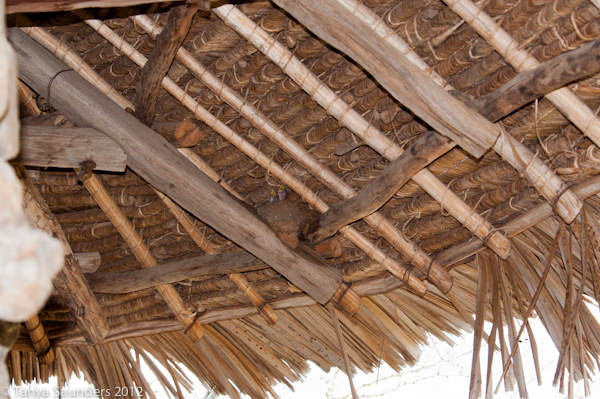
When the adult hops down to the nest, it's straight in with the food without a moment's delay!
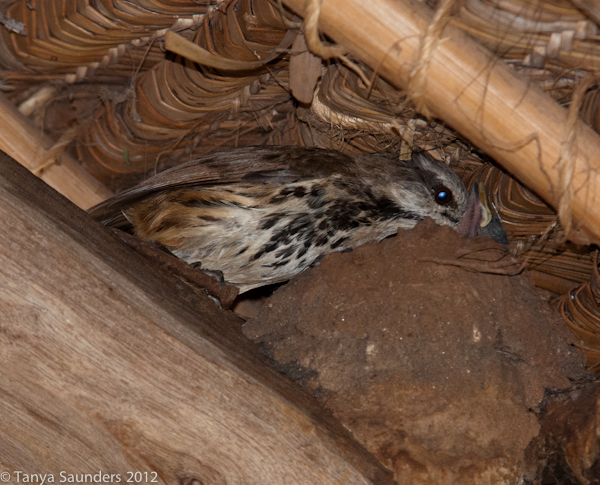
Followed by a spot of house-cleaning. Honestly, these kids never tidy their own room...
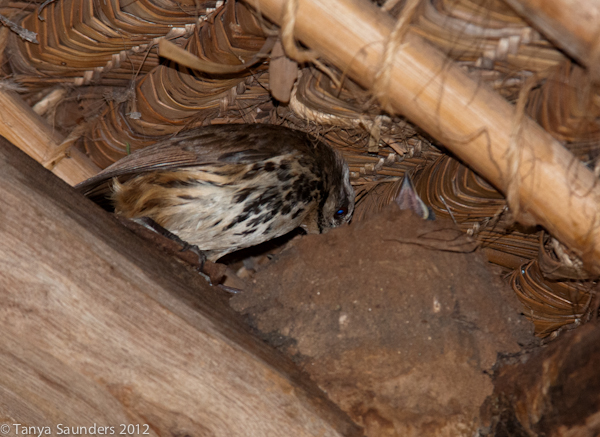
The Spotted Morning Warbler's russet-coloured eye is mirrored by its russet tail. These birds are the most versatile songsters of the African bushland and also great imitators of other birds. At dawn, it is often their song which is the first to ring out and announce the new day.
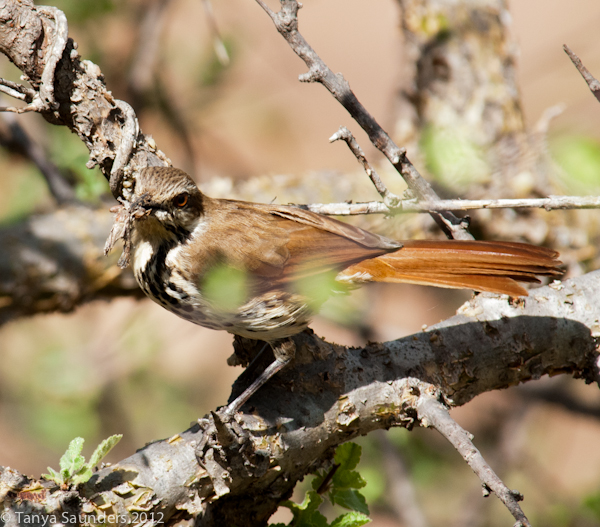
Both parents feed the chicks in an endless relay throughout the day, bringing new fodder to the nest every few minutes. A ritual of hopping from one branch to the next for a while to check all is safe and to confuse any predators is followed by a swift flutter up to the nest, an even swifter feeding and then off again to find the next morsel.
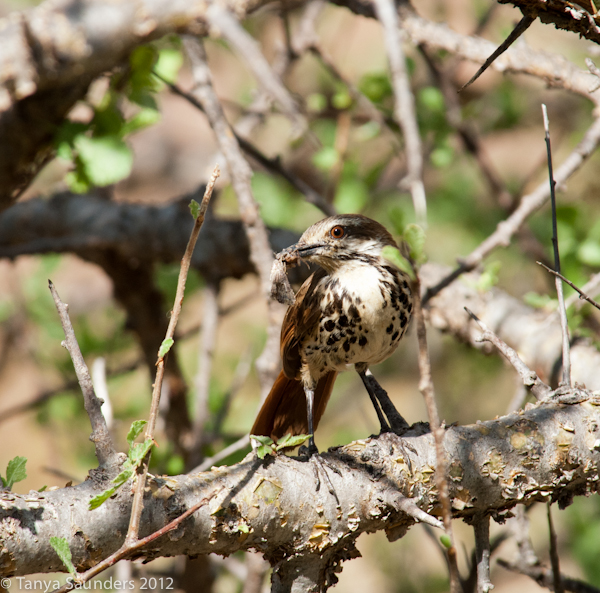
For birds living by the river like this pair, it must be difficult enough in the dry season to find enough insects to sustain their demanding brood. They must be expectantly waiting each day for the rains to break as they bring in beakful after beakful of moths, ants and other soft, easily edible bugs. But spare a thought for the pairs nesting out in the dry hinterland - how much tougher must their job be?
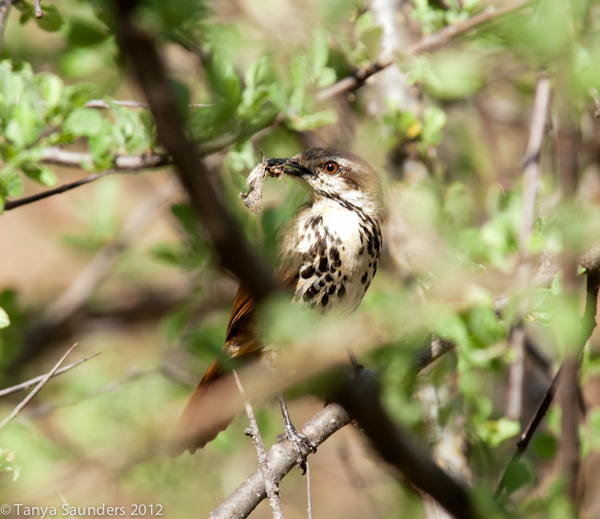
All that hard work by Mum and Dad is having effects at the other end too! I didn't realise this at the time, but when I looked at my photos, I noticed this chick was going to the toilet, neatly dropping its offering outside the nest (and into our bath, thank you very much.)
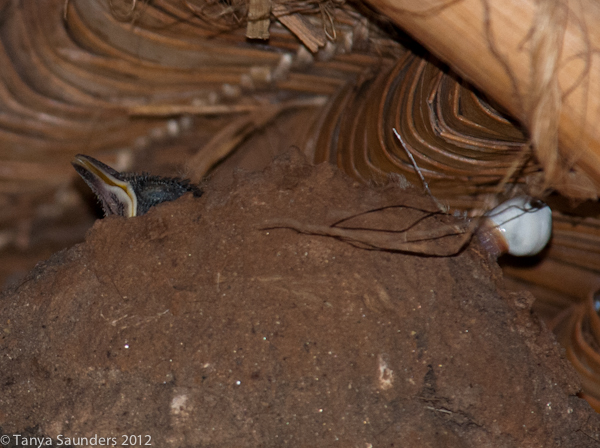
A lot of hard work and many moths went into this creation!
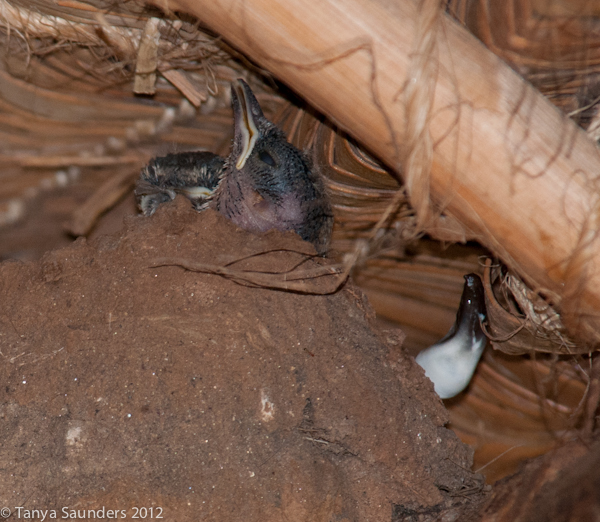
Here's Mum (or Dad) again with the next meal.
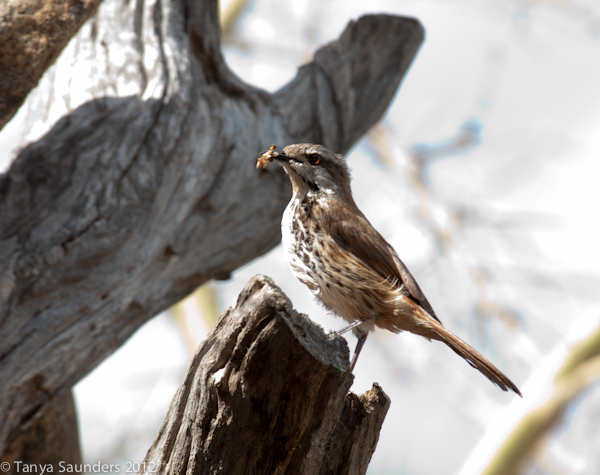
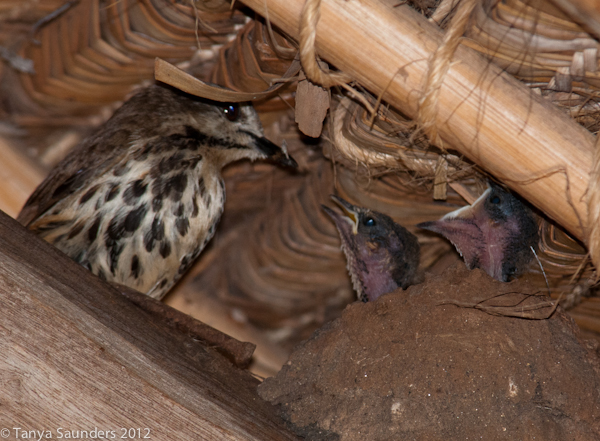
You wouldn't have thought it was less than five minutes since their last meal!
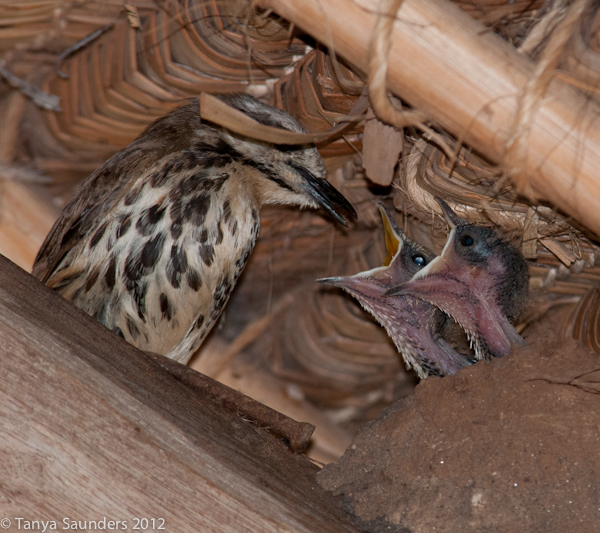
Out of curiosity, that night I had a quick look to see whether one of the parents sat on the nest at night, and sure enough, there was one of the adults snuggled in the nest, keeping their offspring warm and safe...
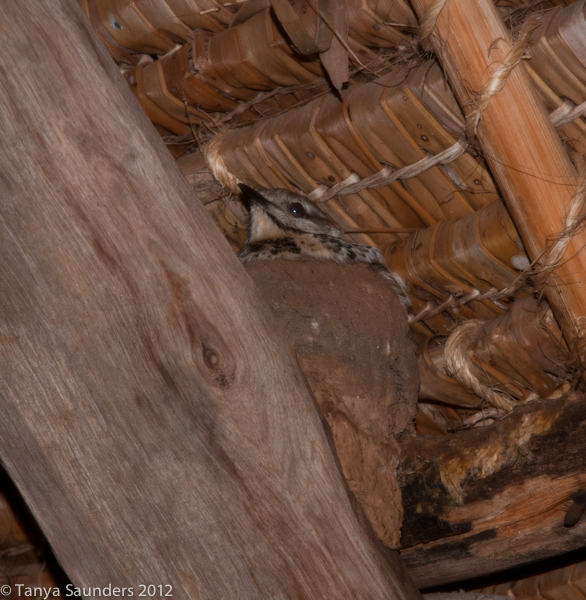
These shots were all taken with my 400mm lens, which allowed me to stand well back from the nest so as not to disturb or frighten the birds, and I was careful at night to only take one shot of the nest in the dark, in case my flash upset them.





Reader Comments